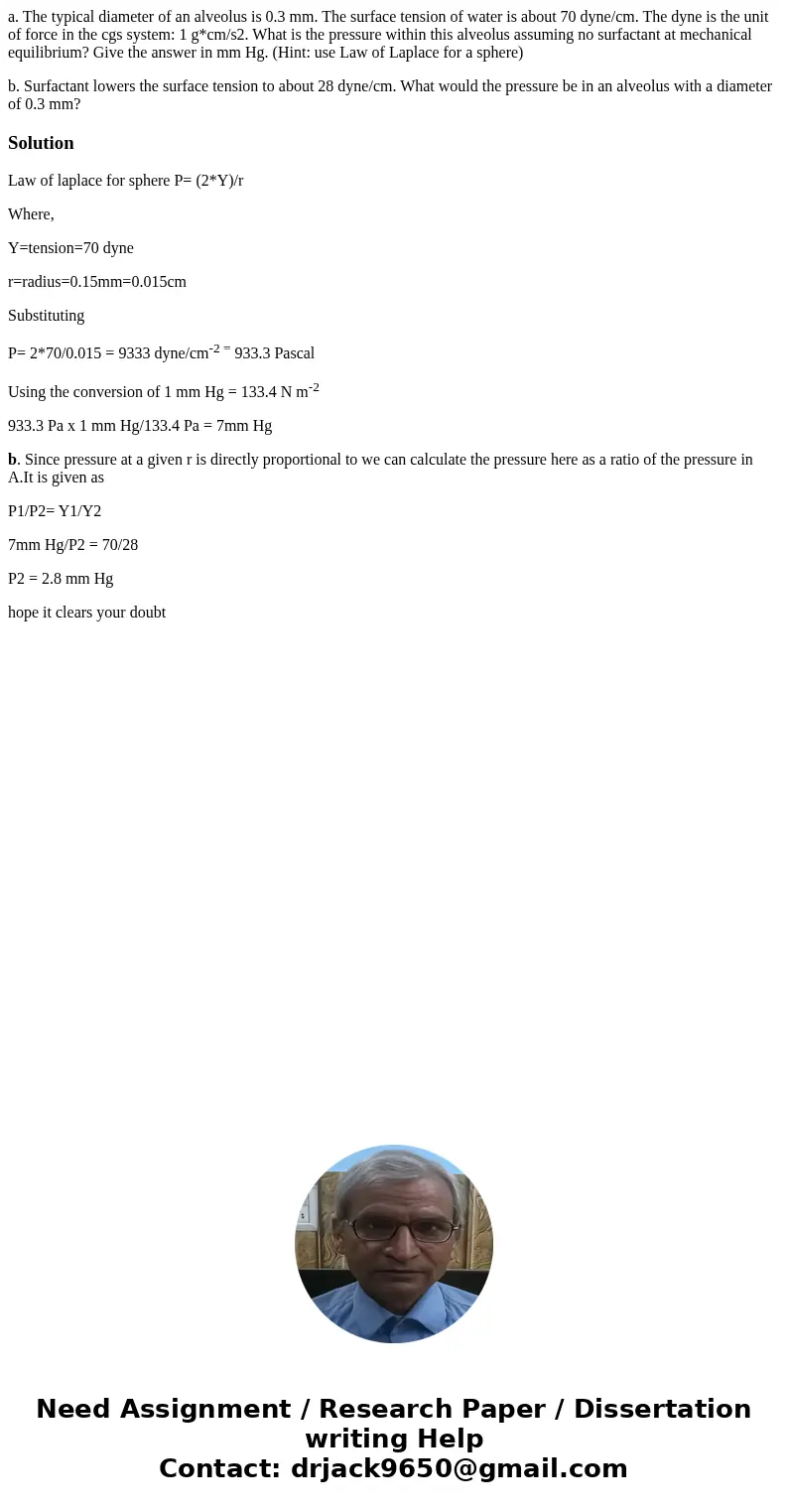a The typical diameter of an alveolus is 03 mm The surface t
a. The typical diameter of an alveolus is 0.3 mm. The surface tension of water is about 70 dyne/cm. The dyne is the unit of force in the cgs system: 1 g*cm/s2. What is the pressure within this alveolus assuming no surfactant at mechanical equilibrium? Give the answer in mm Hg. (Hint: use Law of Laplace for a sphere)
b. Surfactant lowers the surface tension to about 28 dyne/cm. What would the pressure be in an alveolus with a diameter of 0.3 mm?
Solution
Law of laplace for sphere P= (2*Y)/r
Where,
Y=tension=70 dyne
r=radius=0.15mm=0.015cm
Substituting
P= 2*70/0.015 = 9333 dyne/cm-2 = 933.3 Pascal
Using the conversion of 1 mm Hg = 133.4 N m-2
933.3 Pa x 1 mm Hg/133.4 Pa = 7mm Hg
b. Since pressure at a given r is directly proportional to we can calculate the pressure here as a ratio of the pressure in A.It is given as
P1/P2= Y1/Y2
7mm Hg/P2 = 70/28
P2 = 2.8 mm Hg
hope it clears your doubt

 Homework Sourse
Homework Sourse